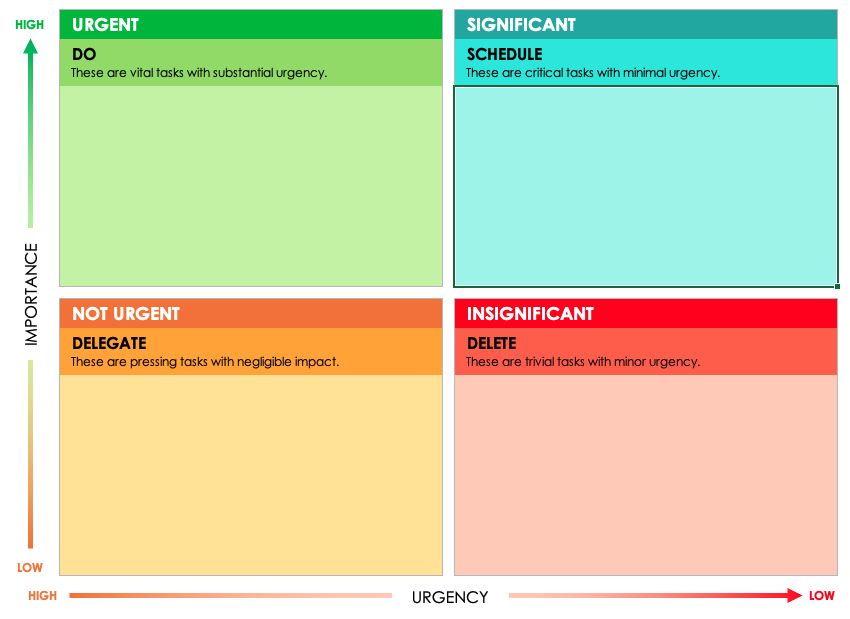Introduction
In the realm of leadership, one universal truth tends to prevail regardless of the leaders we’re working with – busyness. Leaders are perennially summoned by tasks and responsibilities, each clamoring for their undivided attention. Amidst this whirlwind, some leaders thrive, conducting a symphony of chaos, while others find themselves adrift in the tumultuous sea of demands. The question is, what enables some leaders to effectively manage their schedules while others struggle? Some leaders believe that working more hours is the way to create more time. While this might be necessary for a season, excessive hours of work only lead to exhaustion. Effective time management is not about generating more work hours but about discovering ways to work more efficiently. Those who approach time management with insight position themselves to successfully navigate the multitude of demands they face. This is why our Ethos team encourages leaders to utilize time management tools, such as the Eisenhower Matrix, to work smarter, not harder.
The Eisenhower Matrix
Developed by former United States President Dwight D. Eisenhower, the Eisenhower Matrix is a tool that aids in managing tasks based on their level of urgency and importance. Urgent tasks are those demanding immediate attention and will have consequences if not completed promptly. Important tasks are essential to one’s job duties and carry consequences if left incomplete. The matrix consists of four quadrants: Do First, Schedule, Delegate, and Don’t Do. Tasks in the “Do First” quadrant hold high importance and urgency. They must be completed as soon as possible since neglecting them could impact your career and/or organization. “Schedule” tasks are less urgent but still important. These tasks are scheduled on your calendar and will demand your time and effort at a later date. “Delegate” tasks are urgent but not necessarily important. These tasks should be assigned to team members so that you can focus on “Do First” tasks. Delegated tasks will require periodic check-ins with your team to offer support and guidance. Lastly, “Don’t Do” tasks are neither urgent nor important. These tasks are counterproductive habits that need to be discontinued, freeing up your energy and effort for other tasks.
Tips and Tricks
One of the strengths of the Eisenhower Matrix lies in its simplicity. Despite the straightforward nature of the tool, the Eisenhower website offers tips and tricks to aid in its implementation. If you are a leader already using the Eisenhower Matrix, the following considerations may help you refine your approach:
- Consider maintaining a single matrix for both professional and personal tasks. Work-life balance is crucial for leaders to maximize their effectiveness. Having one matrix for both professional and personal tasks provide accountability in maintaining this balance.
- Evaluate what is worth tackling first. Assess the tasks you dedicate time to on a daily or weekly basis. You might be surprised by how many tasks fall into the “Don’t Do” category. You might realize you spend significant time in unnecessary meetings, reading emails, or engaging in other activities. Often, leaders feel compelled to be involved in every facet of the organization. Set boundaries and scrutinize which tasks genuinely require your attention.
- Avoid overloading your Matrix with tasks. A useful tip is to limit each quadrant to a maximum of 8 tasks. The tasks listed in these quadrants are the most vital and urgent. Once a task is completed, it can be replaced with another.
Reflection: How effective are you at managing your time? In what ways could the Eisenhower Matrix assist you in enhancing your time management skills?


















